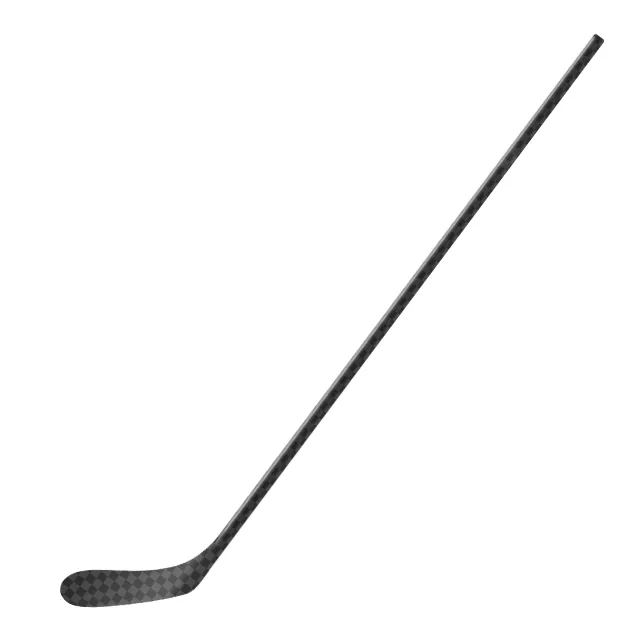Ice Hockey Player Sticks: The Heart of Performance on the Ice
2024-08-28
In the fast-paced and physically demanding sport of ice hockey, equipment plays a critical role in a player’s performance. Among the essential gear, the ice hockey player stick stands out as one of the most important tools. The right stick can significantly impact a player’s shooting accuracy, passing precision, and overall gameplay. In this blog, we’ll delve into the various aspects of ice hockey player sticks, including their types, features, benefits, and how to choose the right stick for your game.
What is an Ice Hockey Player Stick?
An ice hockey player stick is a piece of equipment used by players to handle the puck, shoot, and pass during a game. It typically consists of a shaft and a blade, each of which plays a crucial role in the stick’s overall performance. The stick’s design, material, and specifications can greatly influence a player’s control, power, and accuracy on the ice.
Types of Ice Hockey Player Sticks
1. Wood Sticks: Traditional ice hockey sticks were made from wood, typically a combination of wood types such as ash and maple. Wood sticks offer a classic feel and are known for their durability. However, they are heavier compared to modern sticks and can lack the performance benefits of newer materials.
2. Composite Sticks: Composite sticks have become the standard in modern ice hockey due to their advanced materials and performance benefits. They are constructed from a blend of materials such as carbon fiber, fiberglass, and Kevlar, which provide a lighter weight and greater strength. Composite sticks offer improved power, accuracy, and durability.
3. Hybrid Sticks: Hybrid sticks combine elements of both wood and composite materials. They offer some of the performance benefits of composite sticks while retaining the traditional feel of wood. Hybrids are a popular choice for players who prefer a blend of old and new technology.
Key Features of Ice Hockey Player Sticks
1. Blade Curve: The curve of the blade affects how the puck is handled and shot. Different curves provide varying levels of control and shooting accuracy. Players can choose from various curve patterns, including mid, low, and heel curves, depending on their playing style and preferences.
2. Flexibility: The stick’s flex rating indicates how much it bends under pressure. A lower flex rating (e.g., 75) means the stick is softer and bends more, which can help with quick shots and puck handling. A higher flex rating (e.g., 85 or 100) means the stick is stiffer, providing more power for slap shots and hard passes.
3. Blade Material: The material of the blade can affect its performance and durability. Composite blades offer a lightweight and responsive feel, while wood blades provide a traditional touch and feel. Some sticks have reinforced blades to enhance durability and impact resistance.
4. Grip: Many sticks feature a textured grip or grip coating on the shaft to enhance control and comfort. A good grip helps players maintain control of the stick during play, even with sweaty or gloved hands.
5. Stick Length: The length of the stick should be customized to the player’s height and playing style. A stick that is too long or too short can affect the player’s ability to handle the puck and perform effectively.
6. Lie Angle: The lie angle refers to the angle between the blade and the shaft when the stick is on the ice. A proper lie angle ensures that the blade remains flat on the ice, improving control and accuracy. Players can choose from different lie angles based on their skating stance and preferences.
Benefits of Using the Right Ice Hockey Player Stick
1. Improved Performance: The right stick can enhance a player’s shooting accuracy, passing precision, and puck handling. It allows for better performance during games and practices.
2. Increased Comfort: A stick that matches a player’s preferences and needs can provide greater comfort and reduce fatigue during play. Features such as grip texture and proper length contribute to a more enjoyable playing experience.
3. Enhanced Durability: Modern composite sticks are designed to withstand the rigorous demands of ice hockey, including impacts and collisions. A durable stick can last longer and provide consistent performance throughout its lifespan.
4. Better Control: The right blade curve, flex, and grip can improve a player’s control over the puck, allowing for more accurate shots, passes, and maneuvers on the ice.
5. Customization: Ice hockey sticks come in various styles and specifications, allowing players to choose a stick that suits their individual playing style and preferences. Customization options can further enhance performance and comfort.
How to Choose the Right Ice Hockey Player Stick
1. Determine Your Playing Style: Consider your playing style and preferences when choosing a stick. For example, if you focus on quick wrist shots and puck handling, a stick with a lower flex rating and specific blade curve may be beneficial. If you prefer powerful slap shots, a stiffer stick with a different curve might be more suitable.
2. Check Stick Length: Ensure that the stick is the right length for your height and playing style. When standing in skates, the stick’s blade should reach approximately to your chin or nose.
3. Select the Right Flex Rating: Choose a flex rating that aligns with your shooting and playing style. A lower flex rating is generally better for quick shots, while a higher flex rating is suitable for powerful shots.
4. Consider Blade Curve: Experiment with different blade curves to find one that suits your shooting and handling preferences. Try out different patterns to see which provides the best control and accuracy.
5. Test the Grip and Feel: Evaluate the grip and overall feel of the stick. Ensure that it is comfortable and provides adequate control during play.
6. Budget: Ice hockey sticks vary in price, with composite sticks generally costing more than wood or hybrid sticks. Determine your budget and choose a stick that offers the best balance of performance and cost.
7. Consult with Experts: Seek advice from coaches, teammates, or equipment specialists to get recommendations based on your playing style and needs. They can provide valuable insights and help you make an informed decision.
Maintenance Tips for Ice Hockey Player Sticks
1. Regular Inspection: Check your stick regularly for signs of wear, cracks, or damage. Replace any damaged sticks to prevent performance issues and ensure safety.
2. Proper Storage: Store your stick in a cool, dry place to prevent warping or damage. Avoid leaving it in extreme temperatures or direct sunlight.
3. Clean the Blade: Wipe the blade with a clean cloth to remove ice, snow, and debris after each use. This helps maintain the blade’s performance and longevity.
4. Use Stick Protection: Consider using a blade guard or cover to protect the blade from damage during transport and storage.
5. Handle with Care: Avoid using the stick for unintended purposes, such as using it as a tool or hitting objects. This can cause damage and reduce its lifespan.
Conclusion
The ice hockey player stick is a vital piece of equipment that significantly impacts a player’s performance on the ice. With various types, features, and specifications available, choosing the right stick can enhance shooting accuracy, passing precision, and overall gameplay. By understanding the key aspects of ice hockey player sticks and considering your playing style and preferences, you can select a stick that will help you excel in the sport. Proper maintenance and care will ensure that your stick remains in top condition, providing you with reliable performance throughout its lifespan. Whether you’re a seasoned player or just starting, investing in the right ice hockey stick can make all the difference in your game.



